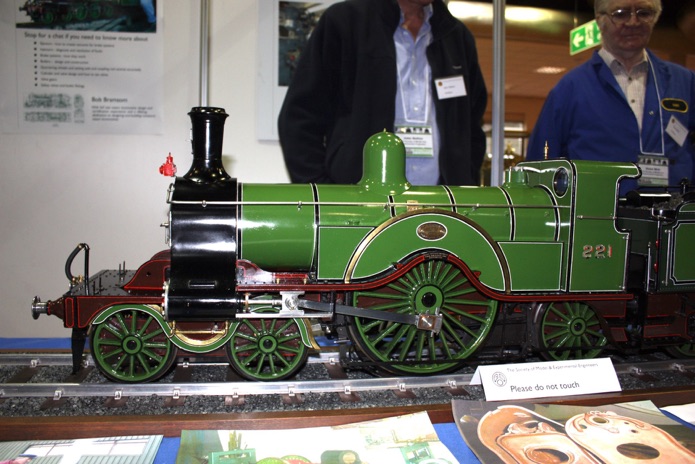Patrick Stirling designed his original single in 1870 after he moved to the Great Northern Railway in 1866. At that time new engines were required for the many new routes that were being opened up. Stirling built his single engines for speed and power, which could handle the continuous gradients on the main London to York GNR line, and compete against the Midland Railway and L&NWR in the ‘Races to the North’.
A product of these races were the famous Stirling Singles. These were elegant 4-2-2 engines with eight-foot driving wheels, and domeless boilers. These popular engines regularly set speed records in the races of 1888 and 1895. None survived into regular LNER stock, although Stirling Single No.1 is now a part of the National Collection at the National Railway Museum in York.
This model is from the MEWS photo archive.
No. 221 was built in 1876 and designed by Patrick Stirling. When he died in 1895 he was replaced by Henry Alfred Ivatt, who modified a number of these engines with the aim of improving efficiency and hauling heavier loads. The loco was later to become the first 8 foot single to be fitted with vacuum brakes, something of which Stirling would never have approved.
No. 221 was the last of the old 8 footers to be rebuilt by him in 1899,. In subsequent years, other changes were made and the loco was finally scrapped in 1909.
The model is a joint effort between Les Dalton and his son, john Dalton. The castings and drawings used are from the Reeves Stirling Single design, although many modifications have been made to turn the loco into a representative scale model and a good running locomotive.
Modifications
• Redesigned valve gear with loco links rather than launch links as per the original.
-
•Cylinder bores reduced and large steam passages incorporated to improve
steam flow to and from the cylinders.
-
•Regulator design modified to make it more progressive to help reduce slip of wheels.
-
•Smokebox completely redesigned to give better access to the superheaters and improve steam flow of both exhaust and inlet pipes.
-
•Front of tender is supported on the rear loco buffer beam to improve adhesion on loco driving wheels, and gives 80% of the loco weight on the driving wheels.
-
•Steel tyres on driving wheels.
-
•Patterns made for chimney with dome and smokebox door castings obtained and safety valve casing made to reflect the Ivatt design.
-
•Cab and cab interior and high-sided tender.
-
•Screw reverse with turn-handle rather than pole.






